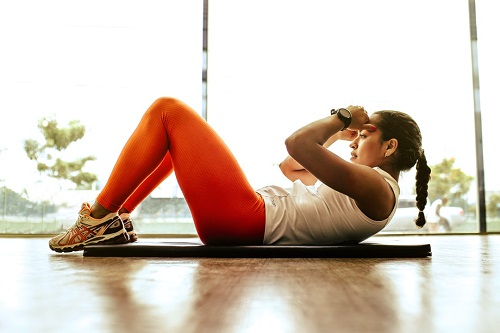If functional fitness is not a part of your exercise routine, then it should be. Here’s what you need to know about this classification of training.
Keyword(s): functional fitness
Did you know that around 75% of the United States population doesn’t get enough exercise?
Are you part of the 75%? We know working out regularly is hard. Life is busy and you don’t always have time to get a training session in.
However, to live a happy and healthy life, you must stick to an exercise routine.
If you’re new to the gym or simply want to change up your fitness routine, you need to try functional fitness. Even if you like your normal workout schedule, there are so many benefits of functional training, you need to start incorporating it.
This guide is going to tell you everything you need to know about functional fitness, from what it is to the best exercises. By the end, you’ll have all the information you need. Read on!
What is Functional Training?
Functional training is exercises that help prepare your body for real-life activities. It’s going to incorporate movements that you do normally, instead of isolating one muscle or muscle group.
You don’t have to worry as much about losing your balance and tripping on a step or hurting your shoulder when you open a heavy door. When training for functionality, you’ll still use equipment, it’s not all bodyweight movements. You’ll see the use of TRX suspension trainers, medicine balls, and resistance bands.
Why Is It Important?
Functional training is going to improve your balance, mobility, strength, endurance, and coordination. The goal is not only to prevent injury but also to improve your quality of life. After adding functional training to your routine, you’ll be able to perform tasks much easier than before.
The squat is arguably the most functional exercise. You have to squat to sit in your car, in your office chair, and even to go to the bathroom.
A bench press is an example of non-functional exercise, as people don’t often make that movement unless they are at the gym. Functional training is great for teaching your body and mind to use good form.
How easy is it to lift a heavy box at work the wrong way and hurt your back? Pretty easy, right? Well, when you add functional exercises into your routine, you train your body and mind the right way to move so you don’t get hurt.
Benefits
There are many benefits of functional fitness. You may not see them right away but know that the exercises you’re doing are making a difference. After a few weeks, a few months, and even a few years, you’ll see how much your life has improved.
Increased Balance and Stability
The first benefit is increased balance and stability. You never know how much you rely on balance until you don’t have it anymore. Balance and stability don’t get better as you age unless you focus on improving them.
While you may not be standing on one foot, during your day, you do walk up and down the stairs. That simple act can be made very difficult if you don’t have balance.
Think about having to reach the top of the shelf in your kitchen for a bowl or trying to get a box down in your storage unit. If you haven’t focused on improving your balance, you may find yourself struggling.
Increased Strength
Strength is another positive result that comes from functional training. As mentioned before, non-functional training focuses on one muscle group at a time, while it is great for building mass, it’s not ideal for building strength that you can use in your everyday life.
If you’re building a bookshelf, rearranging your furniture, or gardening, you’re going to be using more than just one muscle group. You’ll be using your arms, back, legs, and core. If you’re having trained them in a functional way, the task will be much more difficult.
Increased Metabolic Rate
Functional training requires you to use more muscles and joints, which requires more energy and burns more calories. This is great for increasing your metabolic rate and can help you lose weight and improve your overall health.
Best Functional Exercises
Now, you’re probably wondering what experience you should be doing that is considered functional. The examples below can be done at a gym or even at home if you don’t have a gym membership.
Squat-to-Shoulder Press
A squat-to-shoulder press is going to be a great movement to help balance and strength. If you’re at a gym, take a kettlebell, squat and when you stand back up, you’ll press the weight over your head.
If you do this consistently, lifting boxes and other items at your home will become easier.
Lunges
Now you probably aren’t walking around doing lunges at the office or grocery store, but this movement can still be very helpful. If your job requires you to sit for a long period, lunges can help you support your flexibility and mobility. It can also help you stay balanced when you’re walking.
Functional Fitness Routine
Having a workout routine is key. There are so many benefits of regularly working out and there are so many types of exercise that you’ll never get bored.
As you create a routine and find what works for you, don’t forget to include functional fitness and training. It will help you in more ways than you realize.
Working out doesn’t have to be hard. It’s intimidating at first, but once you get started, you’ll be happy you did.
For more health information, advice, and tips, keep browsing our websites. We have countless articles that will help you lead a healthy life.

